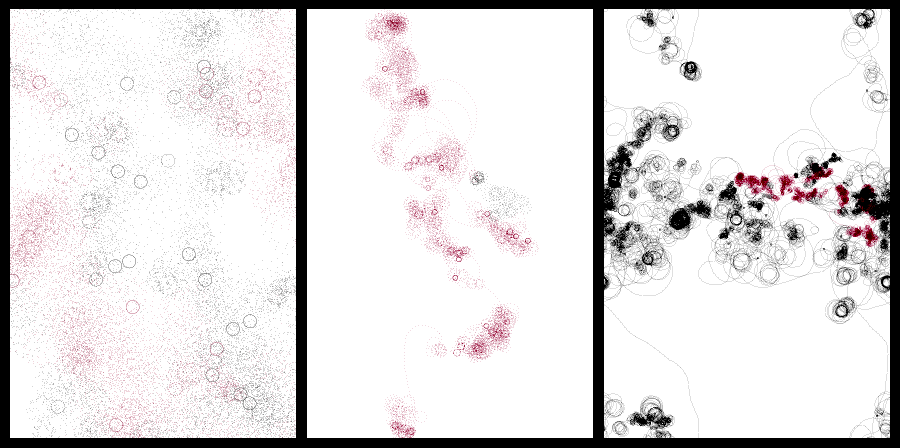Syntenograph

The most compelling aspect of the human genome project comes not from the resulting 3.1 billion A, C, G, and T letters that were collected, but understanding how that compares to other species. Through such comparisons, we can actually follow the path of evolution and understand more about how our DNA actually works.
This piece creates images from the alignment of 500,000 letters of human DNA with that of 43 other vertebrates: animals such as the chimp, mouse, all the way to the zebrafish. Each column of text is one letter of DNA, with the human shown in the bottom row, matched to the identical
letter in each of the other animals in the rows above it. Areas where the columns are similar produce tighter, narrower shapes, while disruptions cause the trails to wander. Functional portions of DNA (genes) are shown in red, conveying some of the variety found in the data.
A dial controls the speed and direction of movement through the text, while the button handle clearing the screen, hiding the letters, or jumping to the beginning, end, or a random position in the DNA sequence.